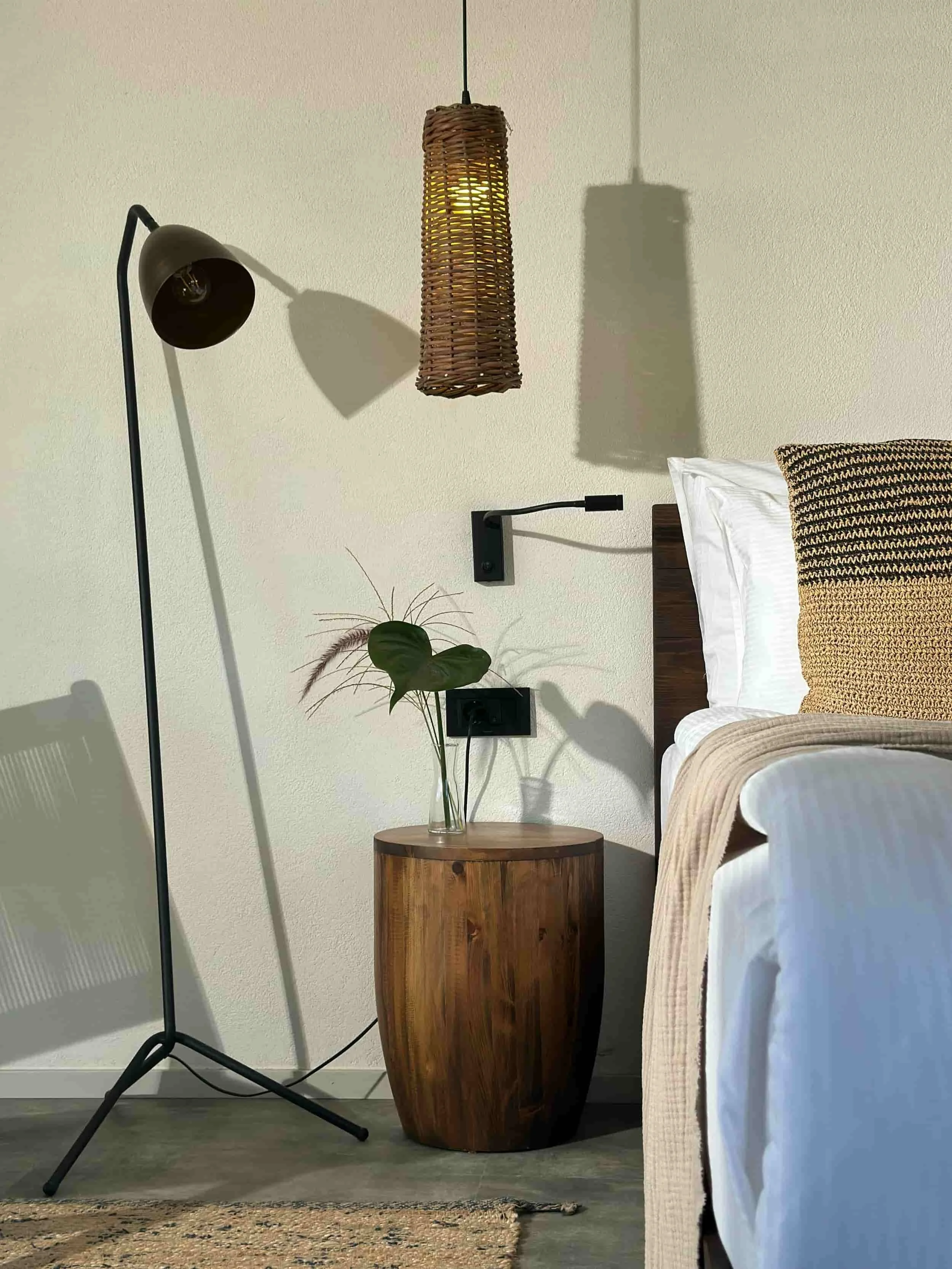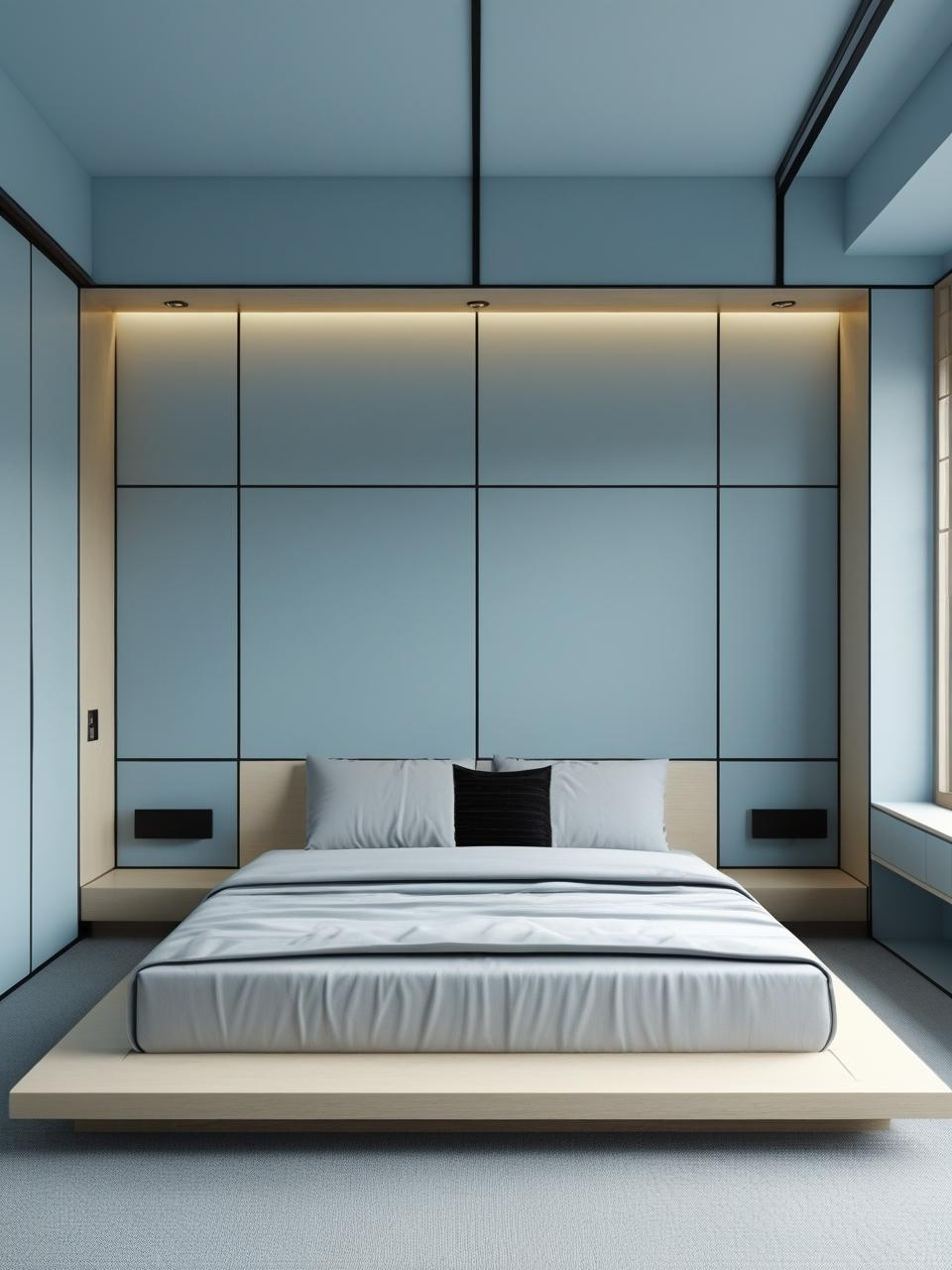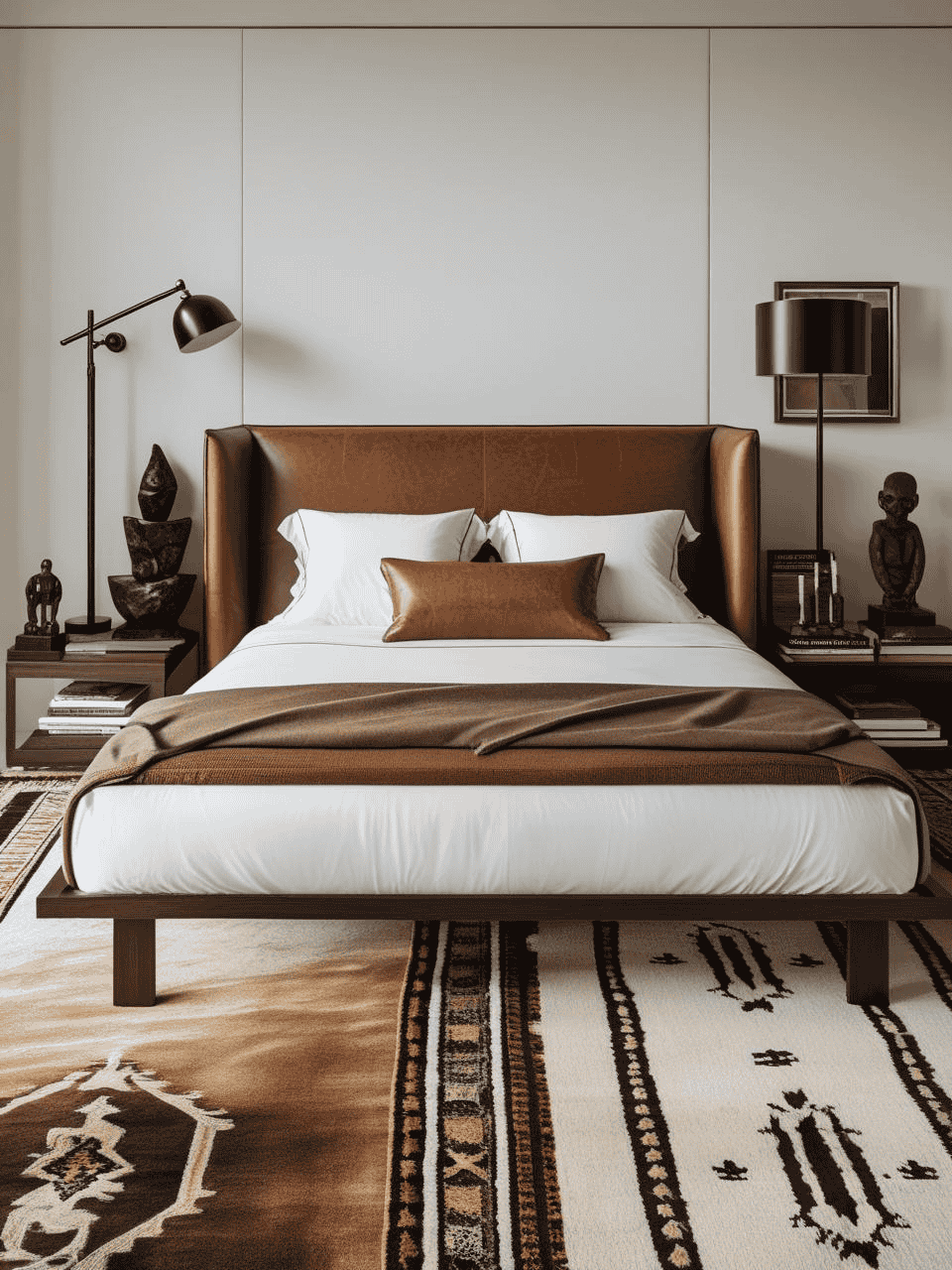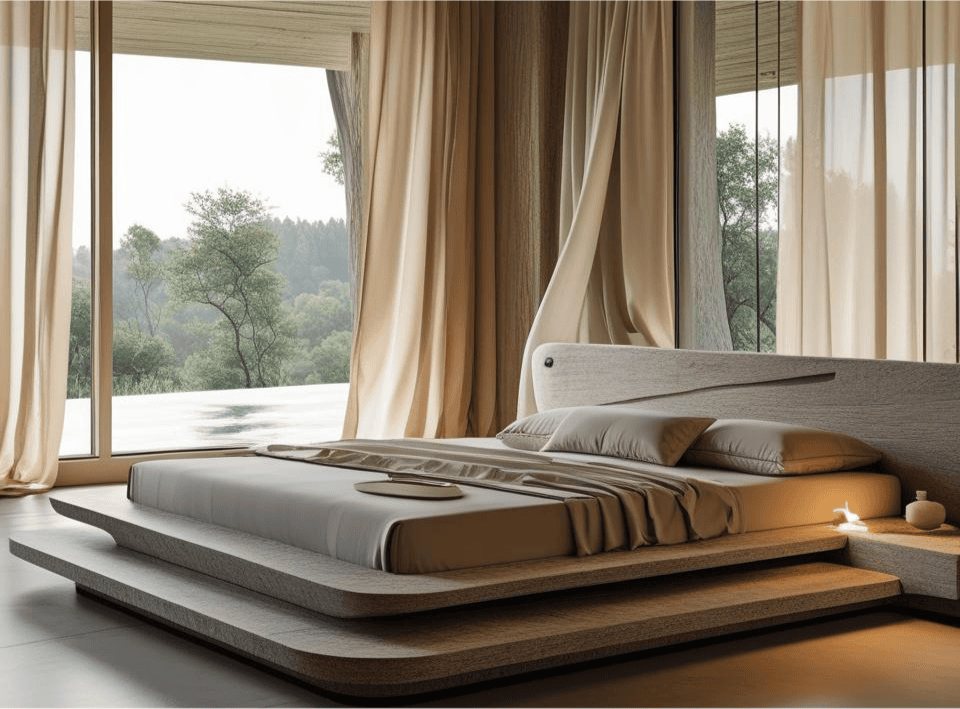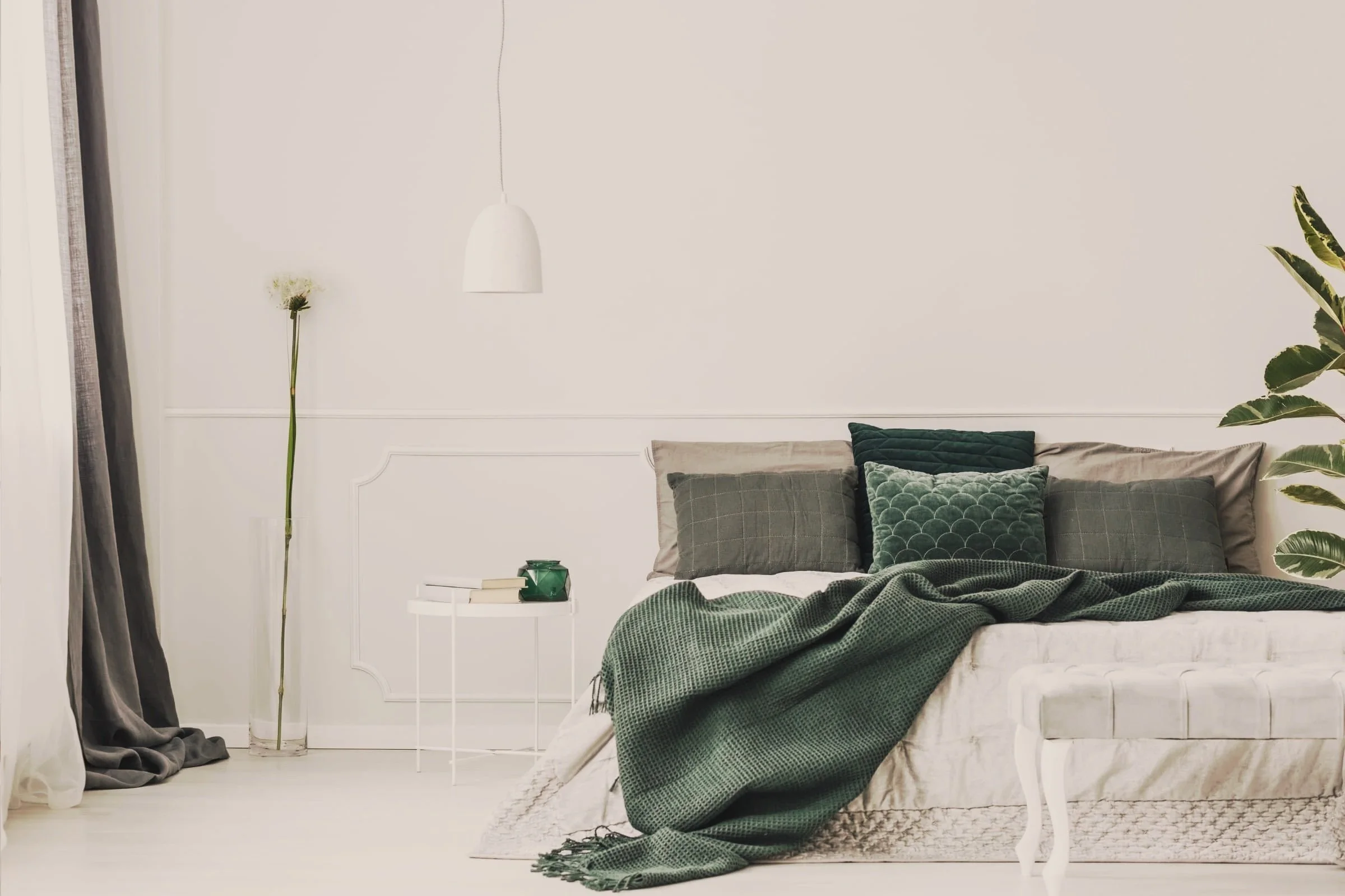King Bed Frame: How Do You Know Which Type to Buy?
When you ask yourself, “How do I know which type to buy?” the answer begins with understanding what a King Bed Frame really offers. Beyond holding your mattress, it shapes the look, function, and comfort of your bedroom. Some frames come upholstered for softness, others as sleek platforms, and many include storage to maximize space. Choosing the right one means balancing your lifestyle, design preferences, and practical needs—so that the bed doesn’t just fill the room, but truly defines it.
The Rundown ↧ ↧ ↧
What is a king Size bed frame , and Why Does It Matter?
A king-bed frame is more than just a place to sleep; it's the centerpiece of your bedroom, reflecting your style and providing lasting support. The right choice has a significant impact on your room's appearance and functionality. This article distills the key types, features, and expert tips to help you choose the best king-size bed frame for your needs.
The Main Types of King Bed Frames
1. King Size Platform Bed Frames
A king size platform bed epitomizes modern classic design in interiors (Pile, 2014). Its sturdy, slatted platform supports a mattress directly—eliminating the need for a box spring. Clean lines and minimalist style make platform beds favorites for contemporary, Scandinavian, and minimalist spaces. Platform beds are prized for versatility and the ability to create openness, a particular advantage in smaller or urban bedrooms (Rinzler, 2018).
Why Choose It?
Sleek, uncluttered appearance
Often sits lower to the ground, creating an open feel
Great for rooms with modern, Scandinavian, or minimalist decor
Upgrade:
Many homeowners opt for a king-size platform bed with storage to maximize floor space and keep bedding, pillows, or seasonal clothing organized—an approach particularly useful in homes with limited closet space (Kilmer & Kilmer, 2013).
↰↰
2. King Size Bed Frame with Headboard
Benefits:
Adds a focal point to the room
Provides back support for reading or relaxing in bed
Can introduce texture, color, or a unique design element.
Combination Option:
A bed frame with a headboard serves as a statement piece, establishing the room’s style. Headboards range from simple wood panels to upholstered options, adding texture, warmth, or elegance.
If you seek both style and practicality, a king size platform bed frame with headboard merges clean lines, sturdy support, and a striking focal point—offering a balanced, functional solution recommended in interior design guides (Rinzler, 2018).
3. king size bed frame with storage
Frames with storage keep bedrooms organized and stylish. They are ideal for homes where maximizing space is crucial, such as apartments or family rooms.
Options Include:
King bed frame with drawers: These offer convenient pull-out drawers along the sides or foot of the bed, making it easier to access essentials without extra furniture. As detailed in The Bedroom Book, this option is ideal for keeping your space organized and tidy.
A king size platform bed with storage offers a streamlined look while providing easy-to-access compartments at the base.
Who Is It For?
Apartment dwellers or anyone with limited closet space
Families who need extra storage for bedding, clothes, or children’s items
4. King Size Canopy Bed
A king canopy bed creates drama and luxury. Its tall posts and potential for draped fabric bring grandeur and privacy, especially in rooms with high ceilings.
Key Features:
Instantly creates a sense of grandeur and height
Can be styled with sheer curtains, bold fabrics, or left open for a modern take
Works best in rooms with high ceilings
⇃⇂
↴
⮑⮑
Materials Matter: How to choose the Right Construction?
The materials used for king-bed frames affect both their appearance and durability. Match materials to lifestyle, maintenance preferences, and décor. Strike a balance between instant appeal and long-term upkeep for a smart choice.
Solid Wood King Bed Frame
Solid wood king-bed frames are prized for durability, natural beauty, and versatility. They suit many styles, offer reliable use, and add warmth and character—often essential for a restful bedroom.
Advantages:
Long-lasting and sturdy
Available in finishes like oak, walnut, cherry, and more
Adds warmth and character to any bedroom
Upholstered Platform Bed King
Upholstered platform bed kings excel in comfort. Padded headboards wrapped in fabric, velvet, or leather add a cozy, luxurious feel. These frames are ideal for those who value softness and enjoy reading in bed.
Why Choose Upholstered?
Soft to the touch and comfortable to lean against
Available in a wide range of colors and textures
Ideal for creating a cozy, inviting atmosphere
Budget-Friendly Options: Cheap King Size Bed Frame
Many affordable king-bed frames blend style and function. Materials like engineered wood and metal offer solid support and lower cost. Choose platform or simple metal frames if budget is a priority.
For budget shopping, plan ahead: call stores to check stock, review assembly instructions, and ask about return policies to avoid common hassles. If you’re looking for the best king-size bed frame, compare options for durability, price, and reviews.
Consider platform designs, which eliminate the need for a box spring.
Shop during sales or at reputable online retailers for the best deals.
Remember:
While affordability is important, interior designers emphasize the need to prioritize quality and stability. A well-constructed bed frame made from reliable materials will provide better long-term value and safety (Kilmer & Kilmer, 2013).
How to Choose the Best King Size Bed Frame for You
To choose the best king-size bed frame, follow this concise approach based on top design books: assess space, define style, prioritize function, and set a budget.
1. Assess Your Space
Measure your bedroom to ensure there’s enough space for the frame and for comfortable movement.
Consider ceiling height if you’re interested in a canopy bed.
Consider your storage needs—do you require additional drawers or compartments?
2. Define Your Style
Modern and minimal: Choose a **king size platform bed** or a sleek upholstered platform bed king for a clean, contemporary look. Design books recommend these frames for creating a spacious and uncluttered feel.
Classic or traditional: Opt for a solid wood bed frame with an ornate headboard.
Luxe and dramatic: A king canopy bed or an upholstered headboard makes a bold statement. A bed frame with a headboard, especially one featuring unique upholstery, can serve as the main visual focal point of the room, as suggested by The Art of Interior Design.
3. Prioritize Functionality
If storage is essential, select a king size bed frame with drawers, compartments, or integrated storage, as these options maximize space without overcrowding the room.
Like to read or watch TV in bed? Choose a bed frame with a headboard for extra comfort.
4. Set Your Budget
Decide how much you’re willing to invest.
Explore high-end materials like solid wood or designer upholstery, or opt for more affordable options like metal or engineered wood. Even budget-friendly frames can be stylish and durable if selected carefully.
FAQs
Q: What is the difference between a king size bed frame and a king size platform bed?
A king-size bed frame is a general term for any frame that fits a king mattress. A king size platform bed is a specific type of frame that uses a solid or slatted base (a flat support system made with bars of wood or metal) to support the mattress directly, so you do not need a box spring (a separate base made of wood and springs). This style is frequently recommended in bedroom design books for its simplicity and support.
Q: Are king size bed frames with storage sturdy?
A: Yes, most modern frames with storage are designed to be as stable and supportive as traditional frames. Look for models with reinforced drawers and solid construction for the best results.
Q: Can I find a king size bed frame with headboard and storage?
A: Yes. Many **king size platform bed frames with headboards** also offer built-in storage, combining comfort, style, and practical use in one design. Interior design experts confirm that this combination is one of the most effective ways to maximize both appearance and space.
Q: What’s the best king size bed frame for small bedrooms?
A: Opt for a king size platform bed with storage king-size canopy bedor king bed frame with drawers —these maximize space without making the room feel crowded. Design literature points out that beds with built-in storage help keep even small bedrooms organized and comfortable.
Q: Are there affordable options for king size bed frames?
A: Yes, cheap king-size bed frames are widely available. Look for streamlined designs and materials, such as metal or engineered wood, for the best value.
Final Tips for Buying Your King-Bed Frame
Read reviews and check ratings to ensure the product's quality and durability.
Match the frame finish and style to your existing furniture for a cohesive look.
Don’t overlook assembly requirements—some frames are easier to put together than others.
Consider future needs: If you plan to move or redecorate, opt for a versatile frame that accommodates multiple styles.
Conclusion: Making Your King-Bed Frame the Centerpiece
Choosing a bed frame is your opportunity to invest in comfort and style—so take action with confidence. Let this guide, grounded in research and proven design principles, empower you to explore options from king size platform beds to canopy and storage frames. Focus on your priorities, whether it's maximizing storage, upgrading aesthetics, or finding affordable elegance, and take the next step toward a bedroom that is both beautiful and inviting. Use expert sources as your foundation and trust your style—now is the time to make your bedroom truly yours.
If you're ready to transform your bedroom with a king-bed frame—whether you choose timeless solid wood, clever storage with drawers, or another style that fits your needs—let this guide inspire you to take the next step. Act on recommendations from respected interior design sources and embark on your journey toward a restful sleep and a home that reflects your unique style. Start creating your ideal space today.


